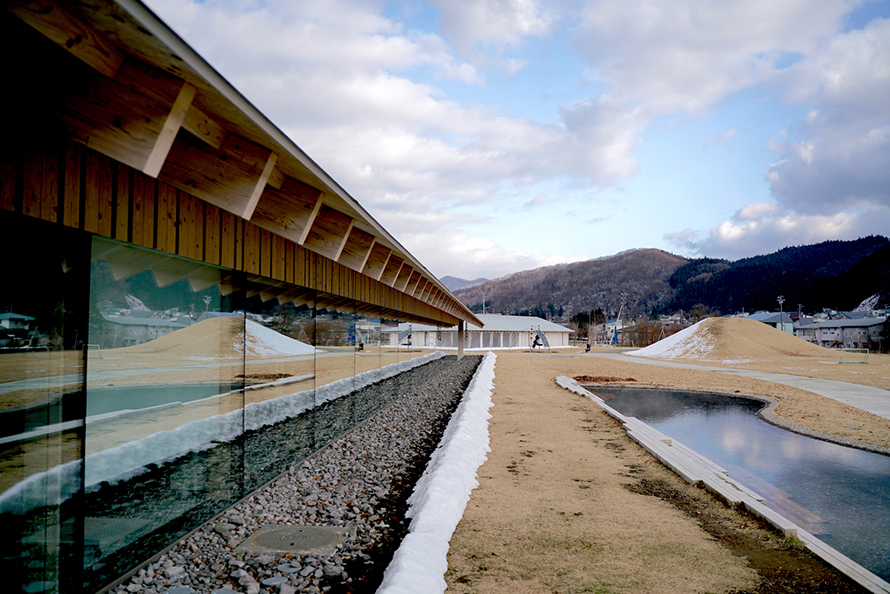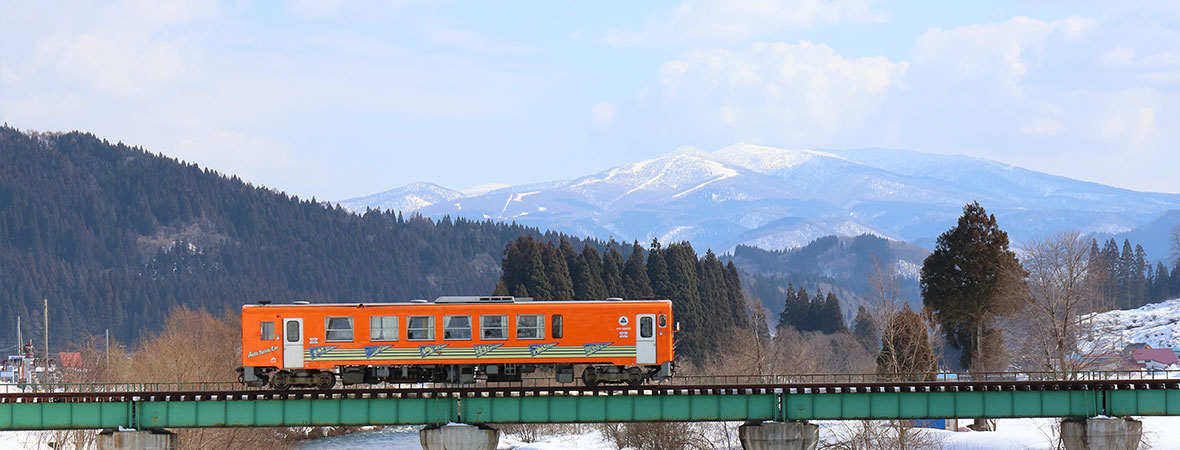Located in the northwestern part of Honshu, Akita Prefecture, a hometown of fish and rice, borders the Sea of Japan to the west, with the other three sides being surrounded by mountains. When you come here, all you can see is the breathtaking natural beauty that gives Akita Prefecture a peaceful and romantic unique charm.
As a healing trip to the northern country of Japan, you can’t afford to miss Odate, known as the birthplace of Japanese national dog “Akita”. Here is one of the recommended one-night trips to the northern part of Akita Prefecture. You would enjoy knowing about Akita’s history, tasting the local cuisine, visiting a traditional theater, soaking in a hot spring and staying at the renovated guesthouse.
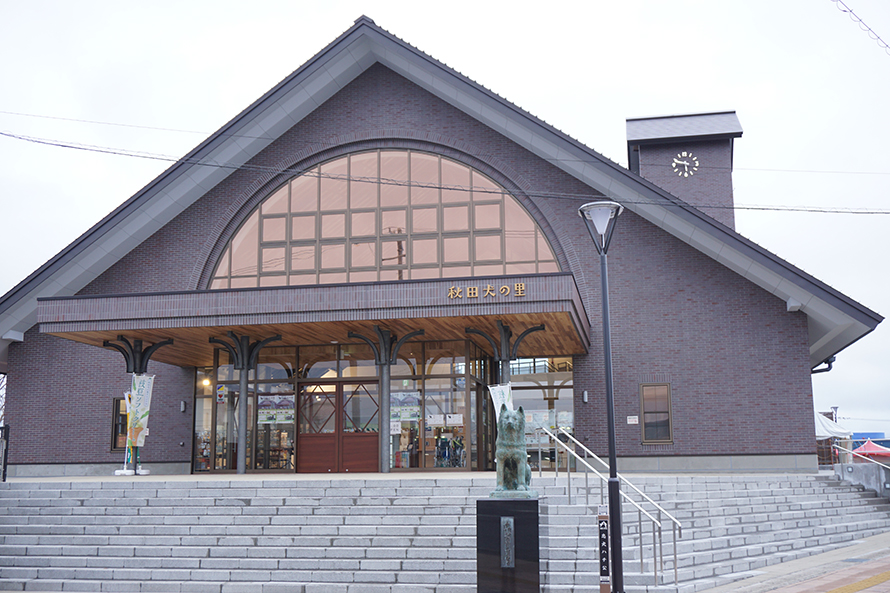
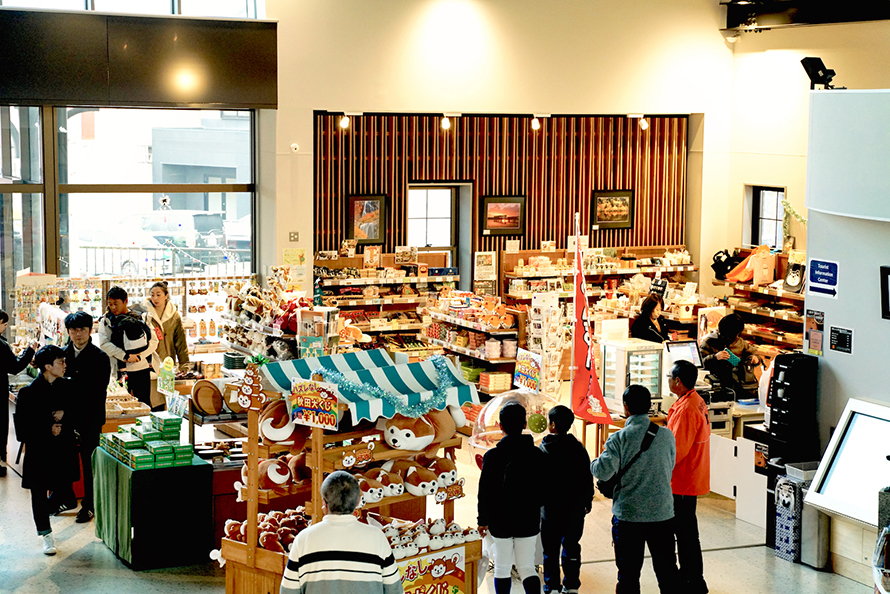
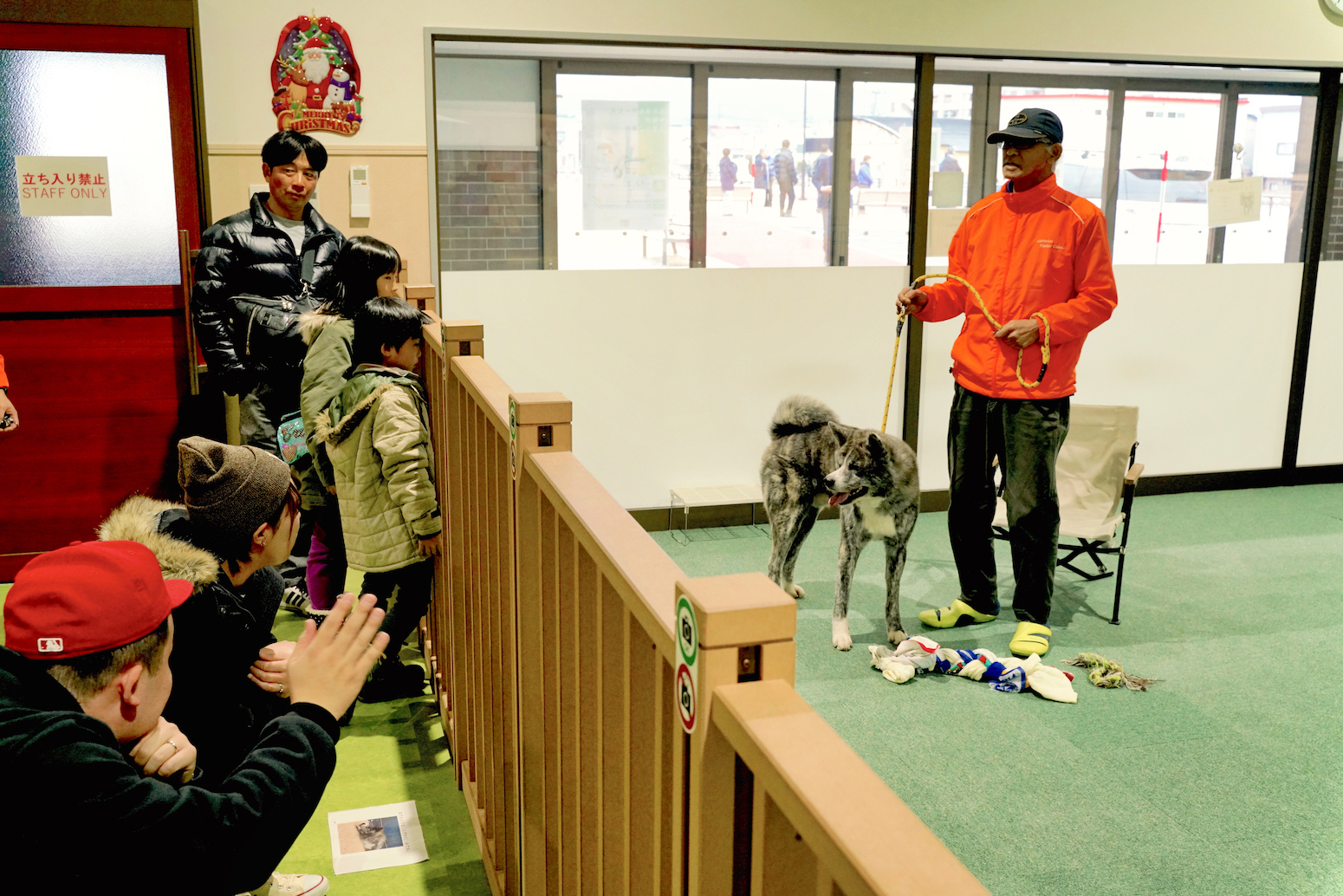
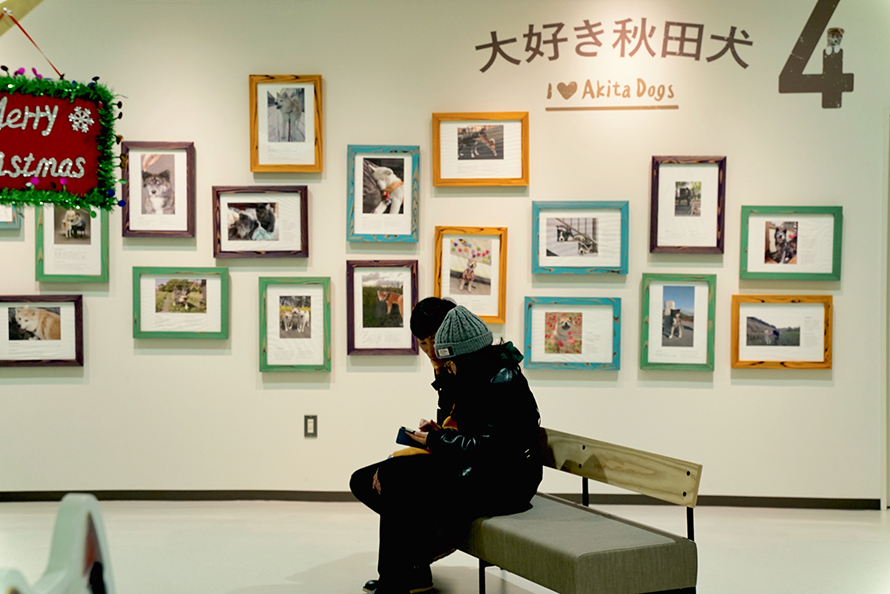




The Akita Visitor Center located nearby the JR Odate station, next to the open and cozy spuare. Inside the building is separated in some sections; Akita dog museum that tourists can learn the history of Akitas and see them in the recreation area, a souvenir shop, and an open terrace on the second floor that you can overlook the landscape of Odate City.
The story of the “Faithful Dog Hachi” at Shibuya Station is well known that it has not only deeply impressed the loyal image of Akitas on people’s mind, but also made Akitas renowned to the world. The Akita Visitor Center is modeled after the 1920’s Shibuya Station in Tokyo where Hachiko waited patiently for his master. The Hachi statue that was originally installed nearby Odate station has been moved to the front of the Center.
“Partners of the Akita Preservation Society will show their Akitas here,” Toru Ishida of the Odate City Commerce and Tourism Division said, “Akitas are loyal to their owners but might be nervous sometimes in contact with people. To ensure safety, their owners will accompany the dogs all the way; so, you can always ask the owners if you have any questions.”
Akita Visitor Center was built so that more people can become familiar with the charms of Akitas, so they are looking forward to seeing a lot of visitors. It is here that you can sufficiently understand the story of Akitas in a simple way and then see the unique local customs and practices in Akita. If you are new here, don’t miss it!

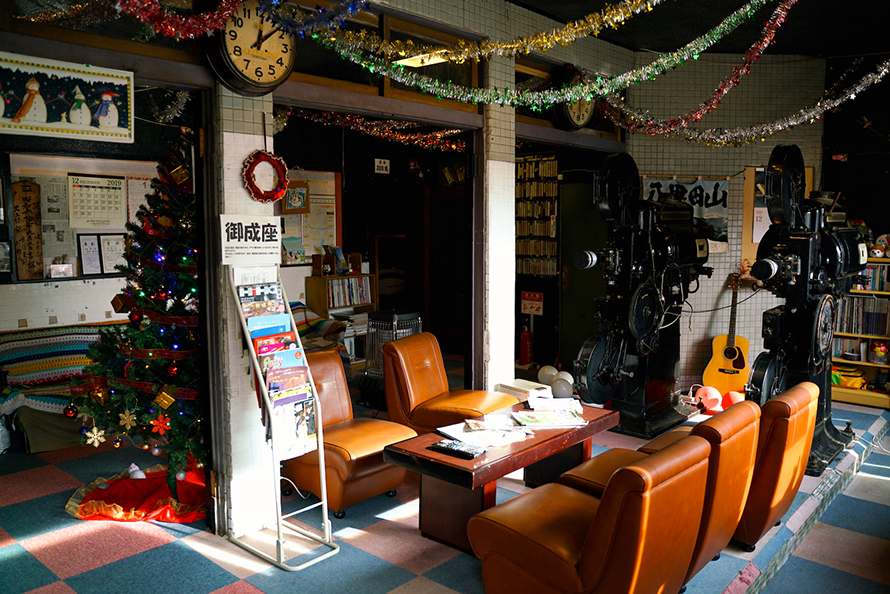
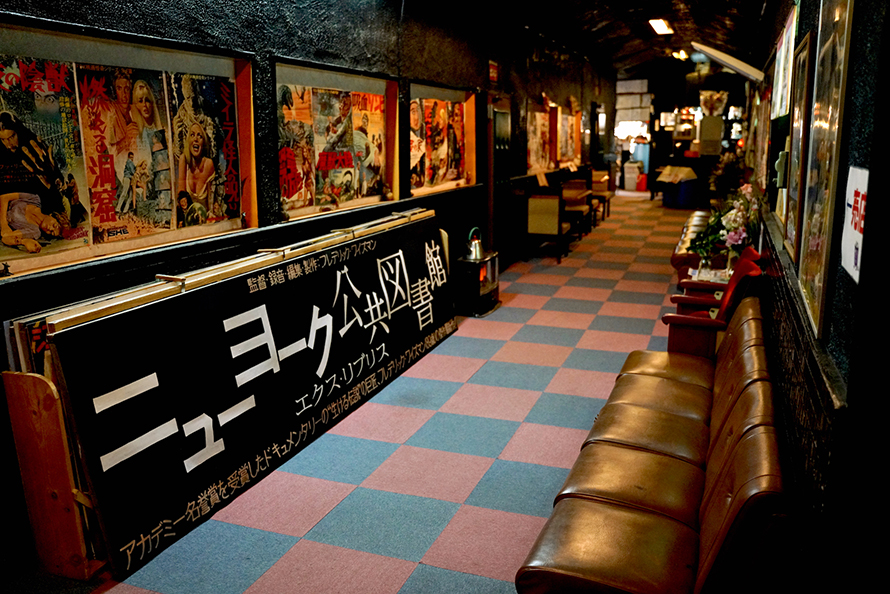
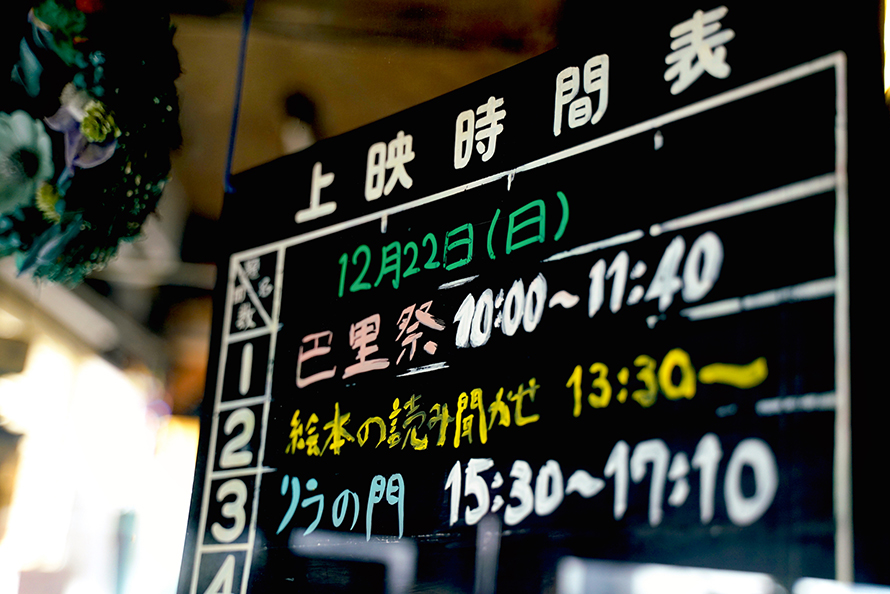
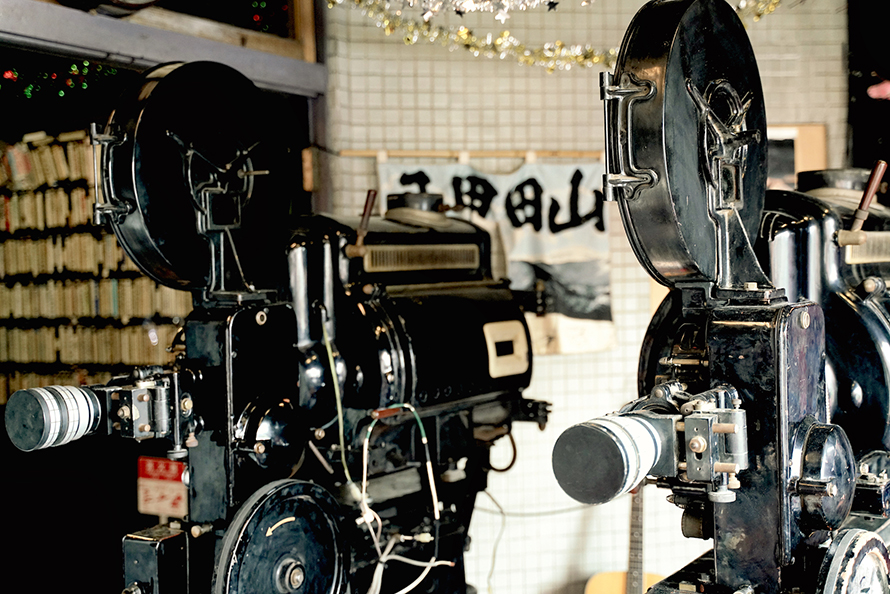
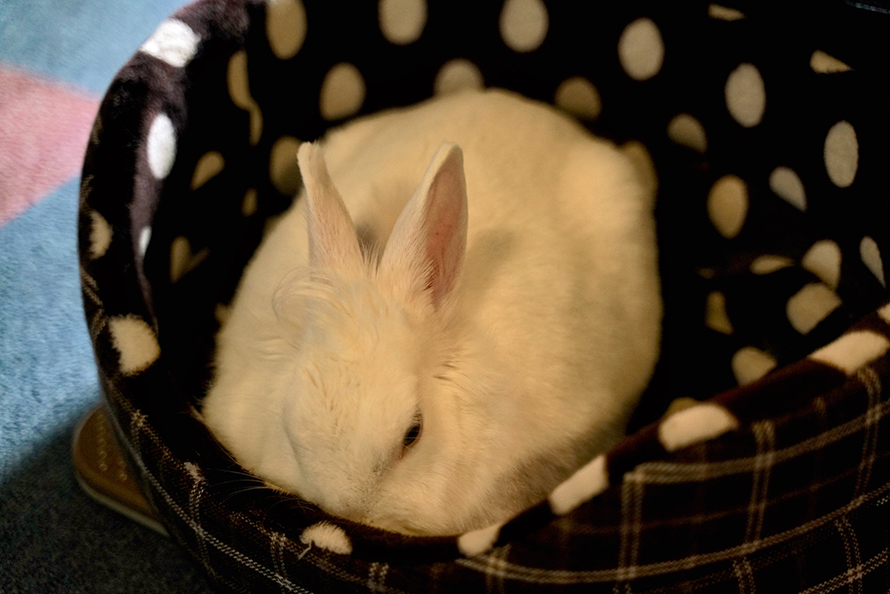
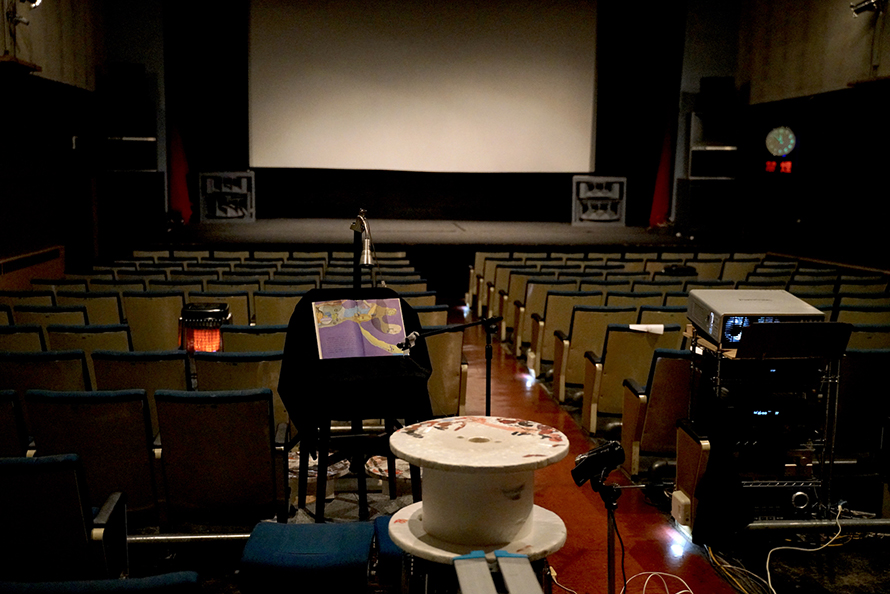
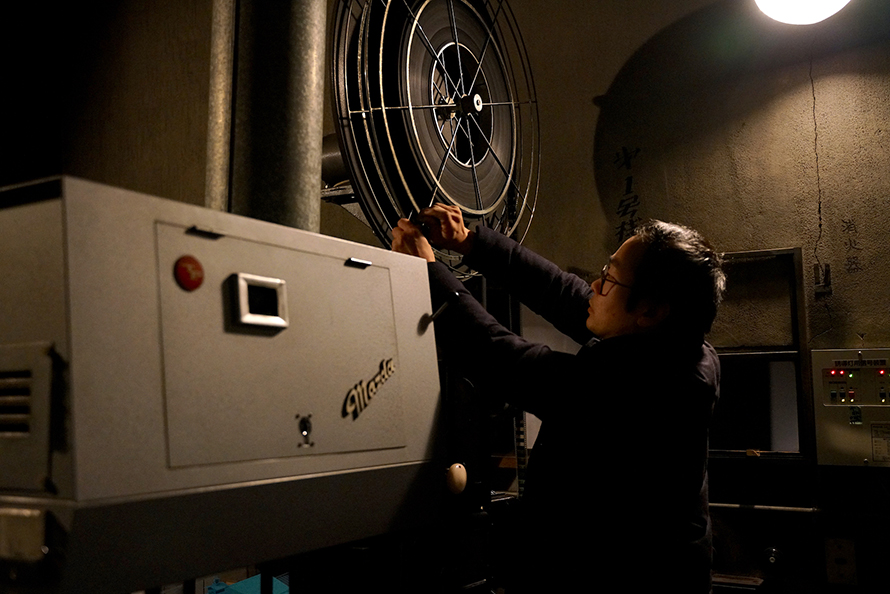








Onariza, an independent movie theater not far from the JR Odate Station, has a long history of nearly 70 years. It is currently the only movie theater that is still open in Odate city.
Established in 1952, Onariza once played to a full house when showing the “Titanic”. However, with the advent of large-scale cinemas, it attracted fewer and fewer customers and was closed in 2005 due to operational difficulties. A few years later, Yoshinori Kirikae, an electrician on a business trip from Chiba, rented this old building which was used only as a residence at that time, and reopened it as a movie theater with the help of neighbors in a hope to revive the former glories of Onariza.
The theater shows one or two movies every day and changes the list once every two weeks, alternating with modern and retro movies, to meet the needs of different audiences. In addition, the venue is also available for rent. Community members hold events such as concerts and storytelling, making the place like a living room in the neighborhood.
It is worth mentioning that the movie signboards hung outside the building retain purely hand-painted, all of them drawn by the enthusiastic people living nearby. It is indeed a real blast from the past, a unique scene even in the whole of Japan.
See the inormation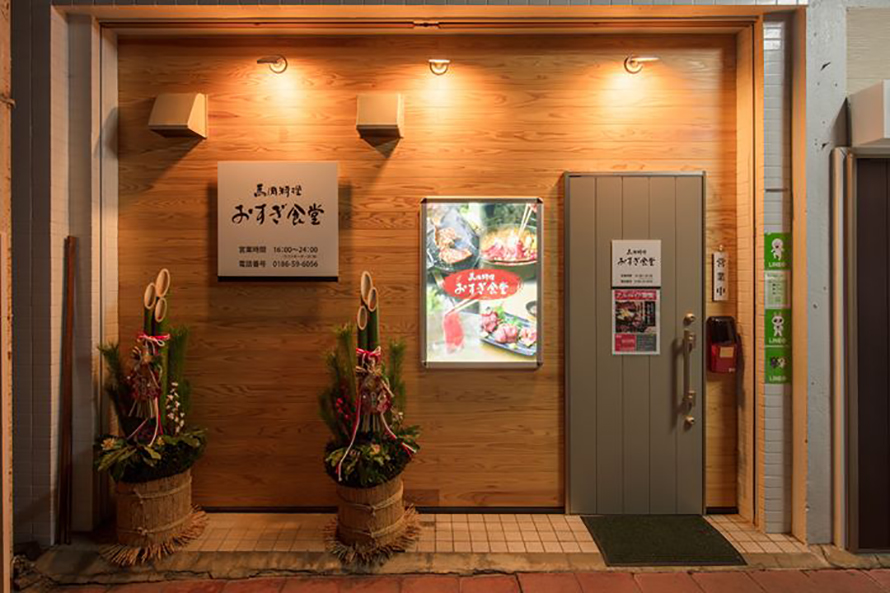
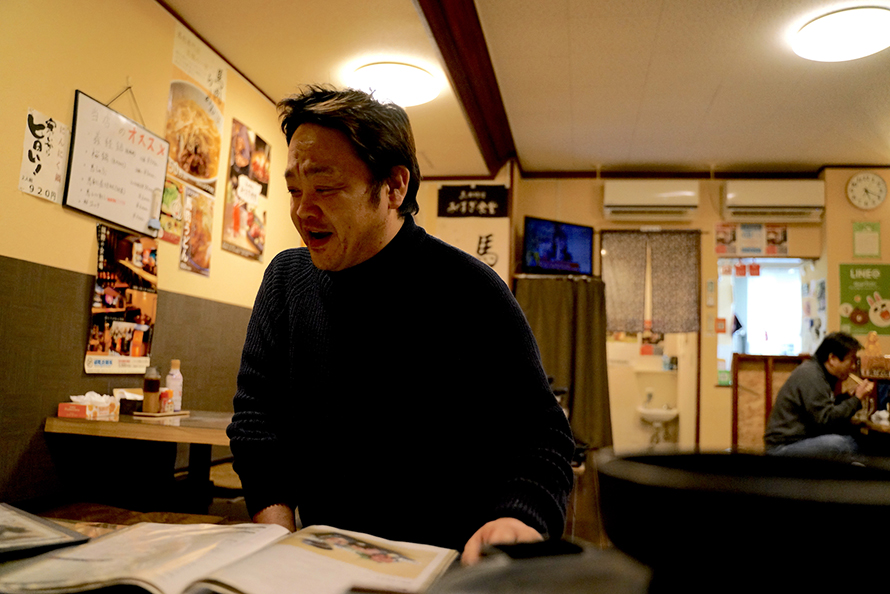
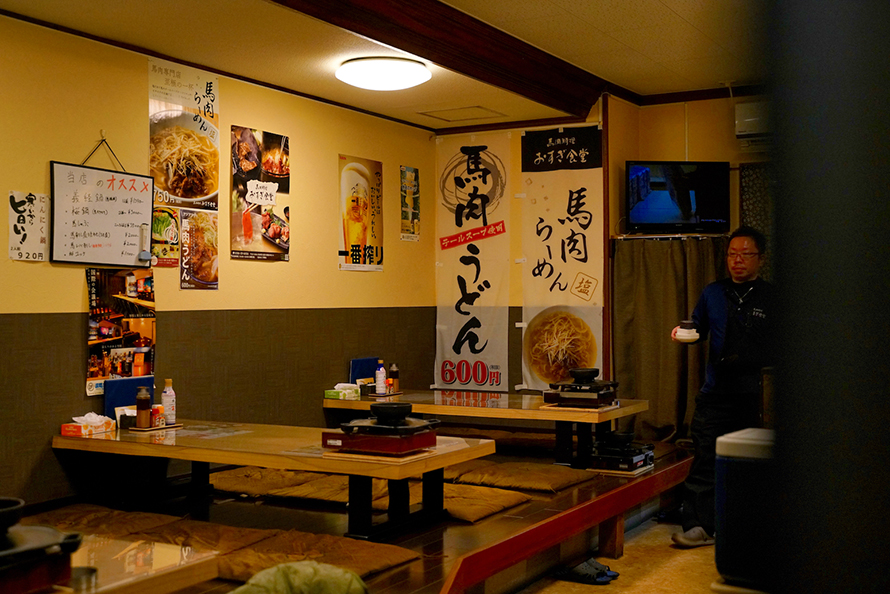
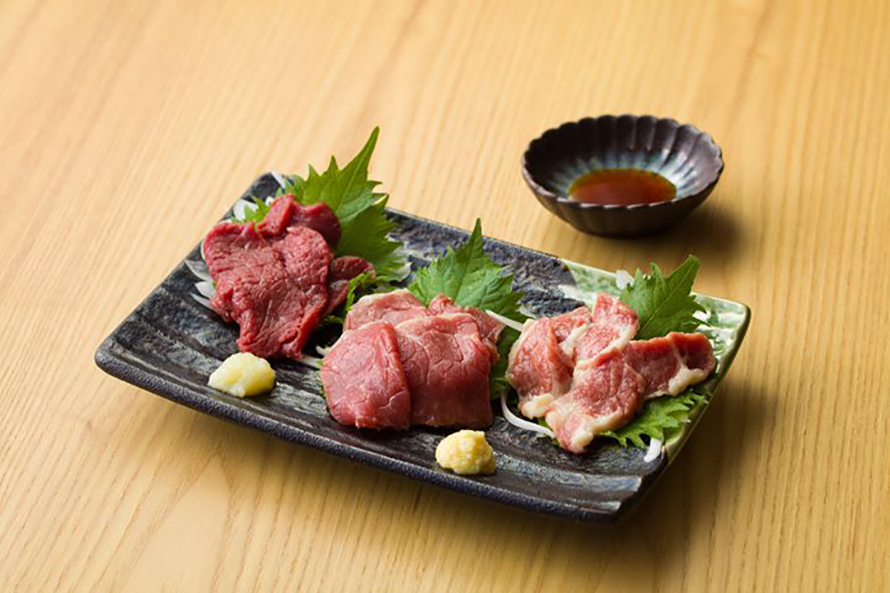
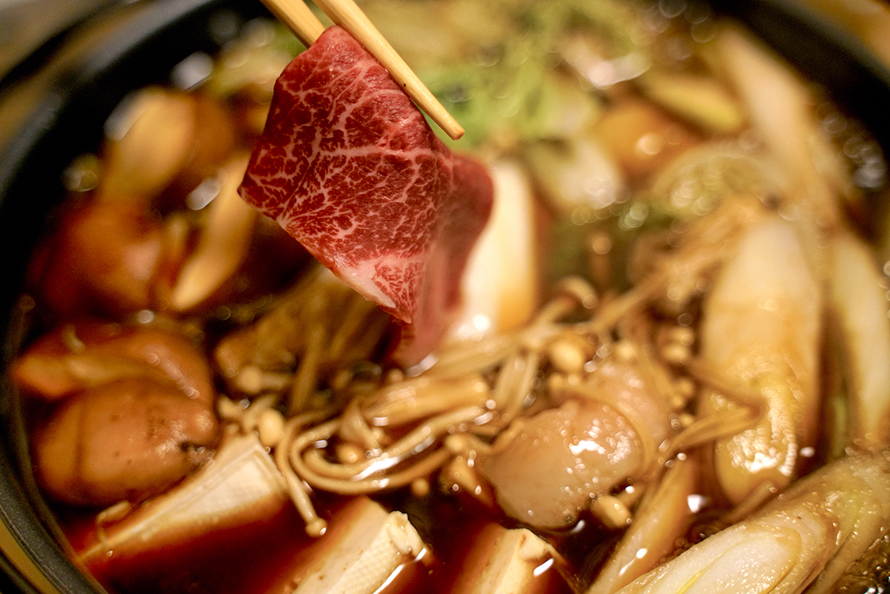
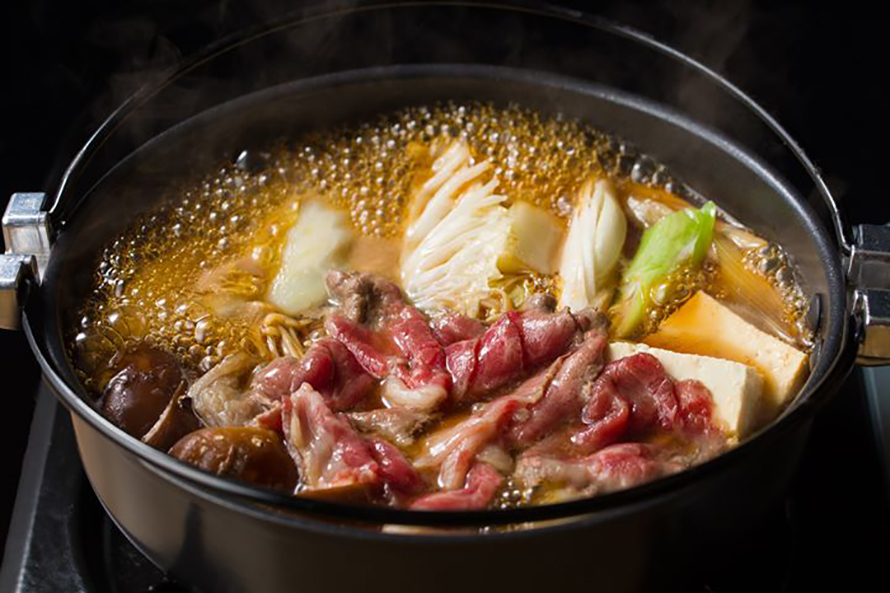






If you want to share with friends the authentic taste of horse meat cuisine in the area of Odate, the locals will recommend the Osugi Shokudo canteen, where you can enjoy in a cozy space such dishes as sashimi, barbecue, hot pot, sukiyaki, ramen, and more.
Since ancient times, horses have been served as warriors’ mounts and rarely used for cooking. However, in some parts of Japan, horse meat is a traditional cuisine commonly found in restaurants, and the area around Odate is one of them. “Odate was one of the important mining bases in Japan in the past. At that time, many miners suffered from lung diseases because of their work. It was said that eating horse meat could strengthen the physique and relieve the diseases, and thus many households have started cooking horse meat,” said the restaurant owner Takayoshi Sugibuchi.
Horses that run on pastures have less fat and their blood is cardinal red. “Because the flesh is red and tender, just like cherry blossom in full bloom, we call horse meat ‘cherry’, sakura in Japanese.” The restaurant owner said that with the evolution of the times, the way of eating horse meat in Japan has become more and more diverse. In addition to the traditional sashimi of horse meat served with onions and ginger, the horse meat hot pot is commonly known as “Sakura Pot” is also very popular. In Odate, a taste of horse meat is something you should not miss.
See the inormation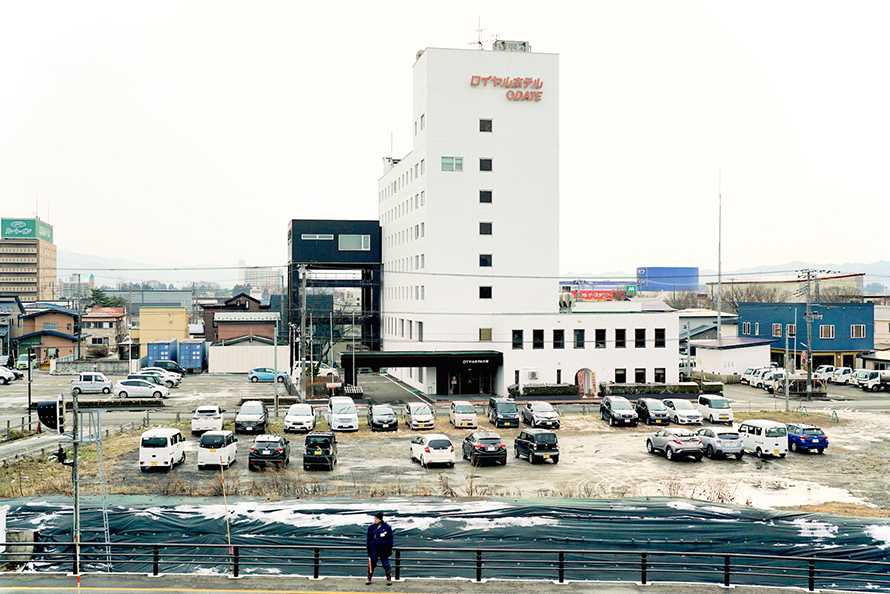
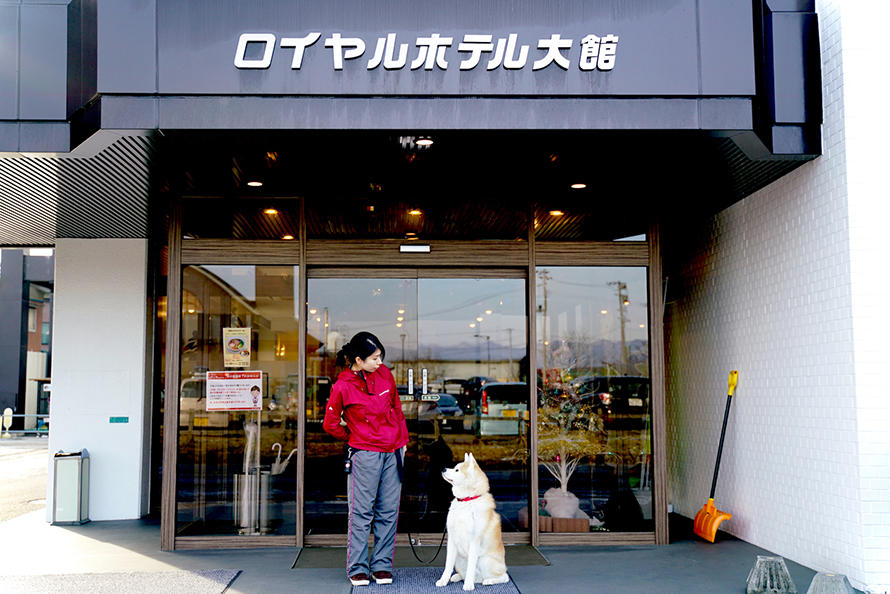
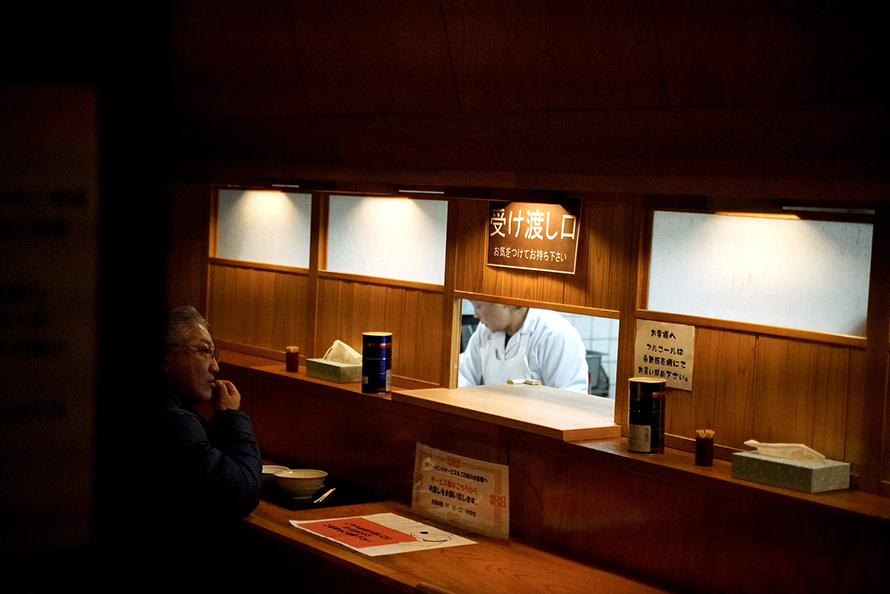
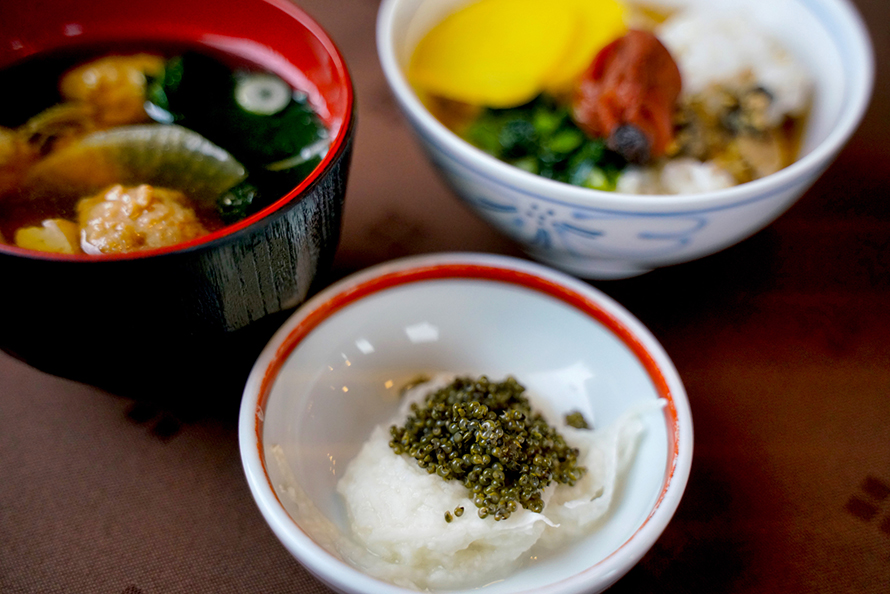
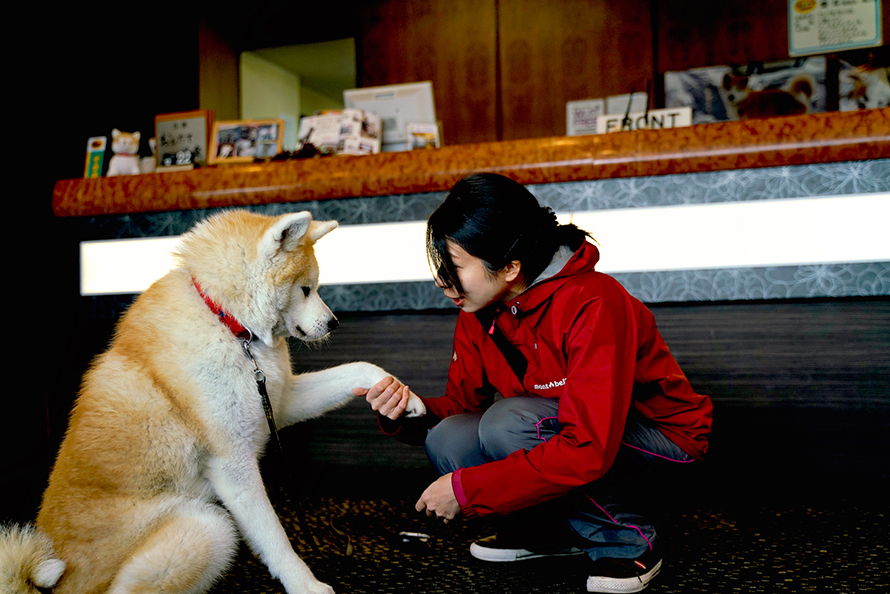
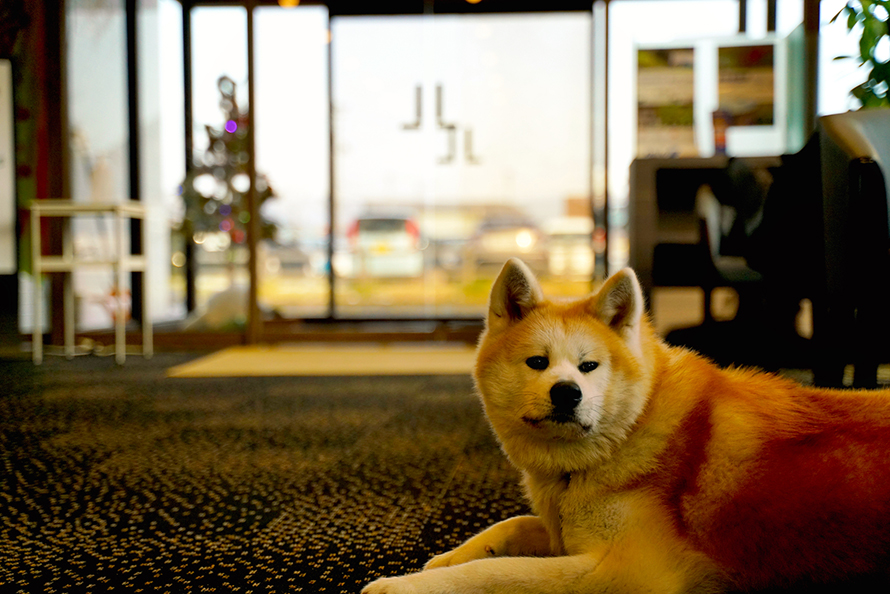






The Royal Hotel, located not far from JR Odate Station, is popular among tourists not only because of its convenient location but also due to two Akitas named “Eito” and “Hina”, which have been raised since three years ago and have become selling points of the Hotel to attract many tourists who love Akitas.
The large spa inside the Hotel is also full of local features. During the bath, you will enjoy not only the natural hot springs but also the skyline view of Odate City. It is enough to wash away your toil for the day. In addition, also prepared with great care is the breakfast, such as Akita’s locally produced “Hinai Chicken” and “Tonburi (Broom grass fruit, also known as Japanese caviar)”. Moreover, guests staying there can redeem a bowl of ramen and a bowl of delicious Akita rice every night, allowing everyone at the Royal Hotel not only to stay overnight, but also to experience the unique local culture through the five senses.
See the inormation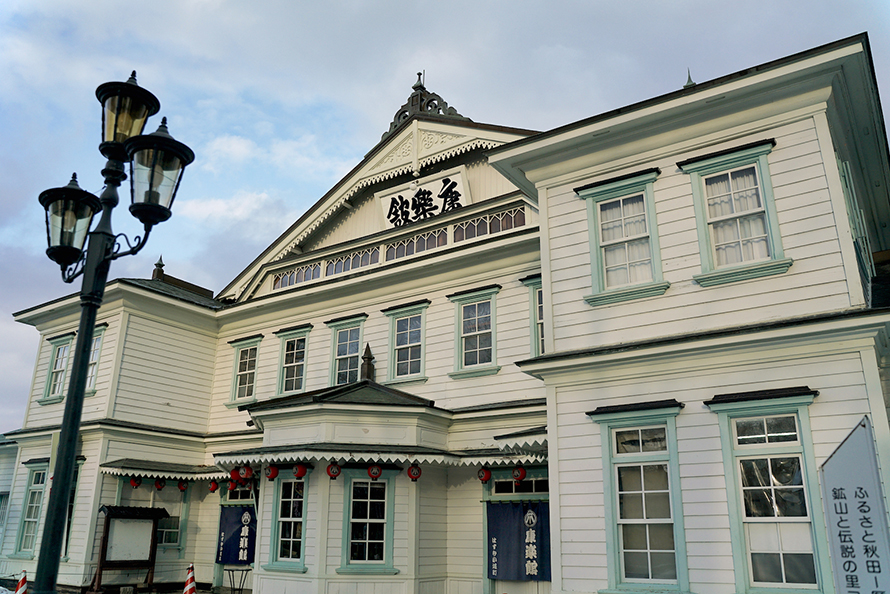
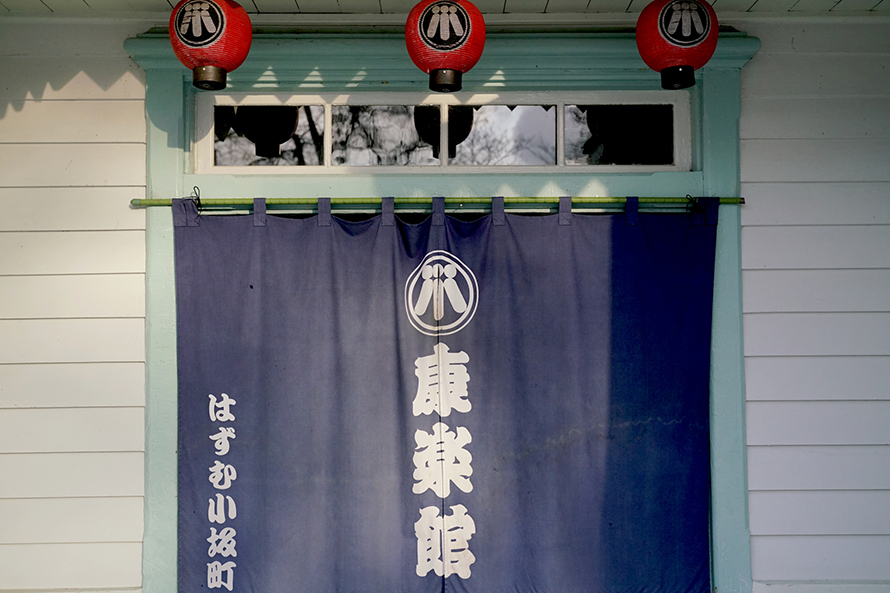
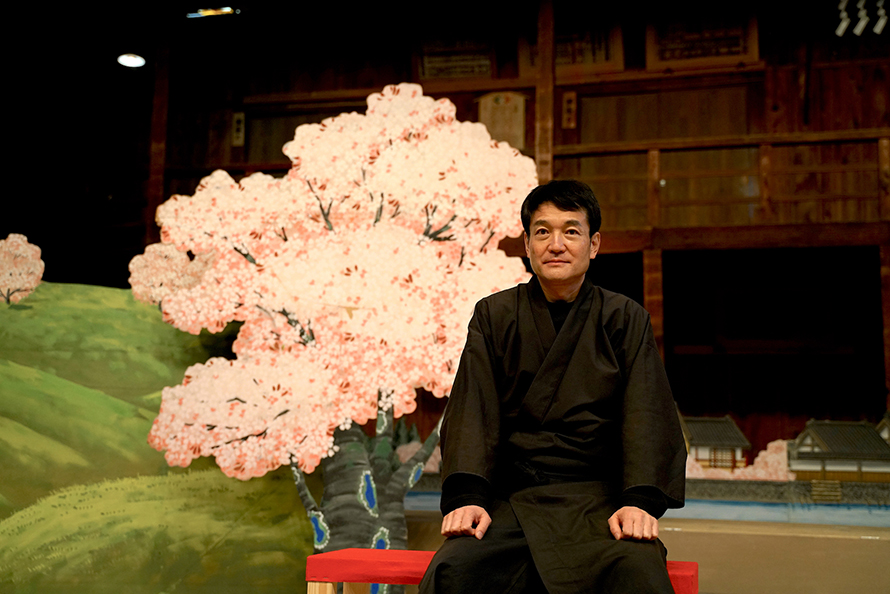
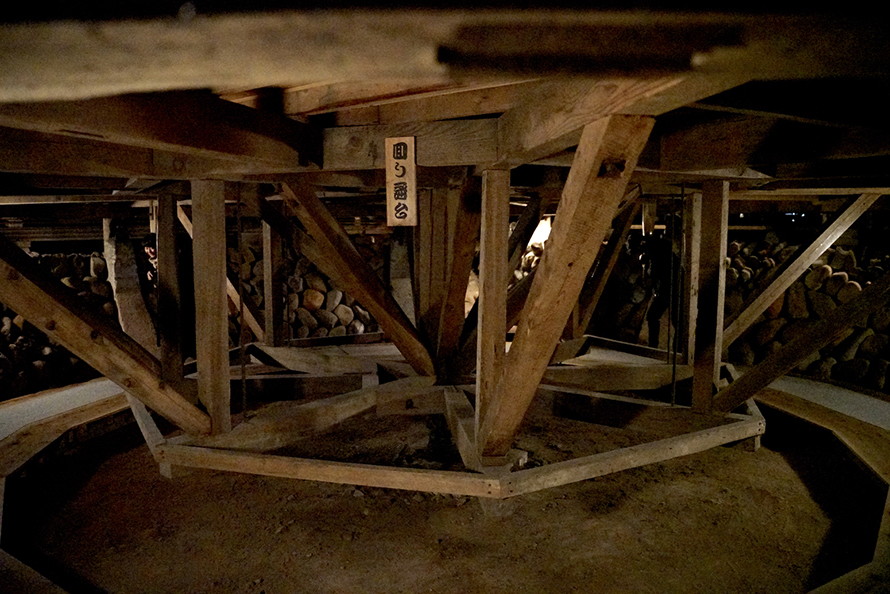
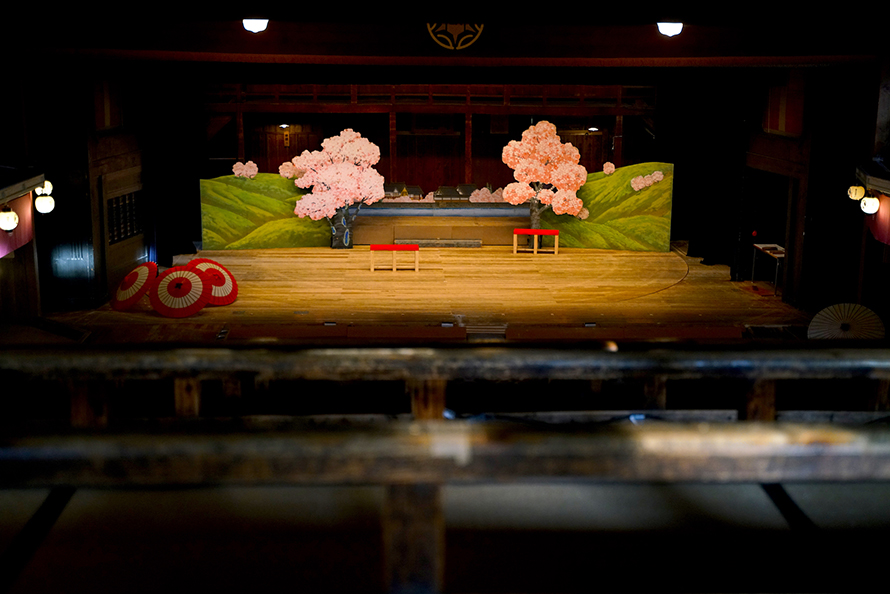





The theater “Korakukan”, built in 1910, is located in Kosaka Town that faces the northeastern border of Odate City. It is one of the oldest traditional Kabuki theaters in Japan and is listed as a National Important Cultural Asset.
The history of Korakukan is closely related to the Kosaka Mine, known as one of the three largest mines in Japan. To provide entertainment for miners in their spare time, this wooden theater was set up to show superb Kabuki performances by various troupes.
The building is a clever blend of Western and Japanese cultural elements. It combines European-style appearance with the interior structure of a traditional Japanese theater, including the auditorium seating layout, the setting of actors’ passage, the human-powered revolving stage, etc. Carefully preserved by the locals for one hundred years, Korakukan still provides fixed performance programs. During the cold winter season every year, performances are temporarily suspended, and visitors get opportunities to experience a variety of events, including playing on the stage by putting on full sets of props and pushing together the human-powered revolving stage below the stage. Visitors can experience not only the local history of Akita Prefecture, but also be amazed by the Japanese Kabuki culture.
See the inormation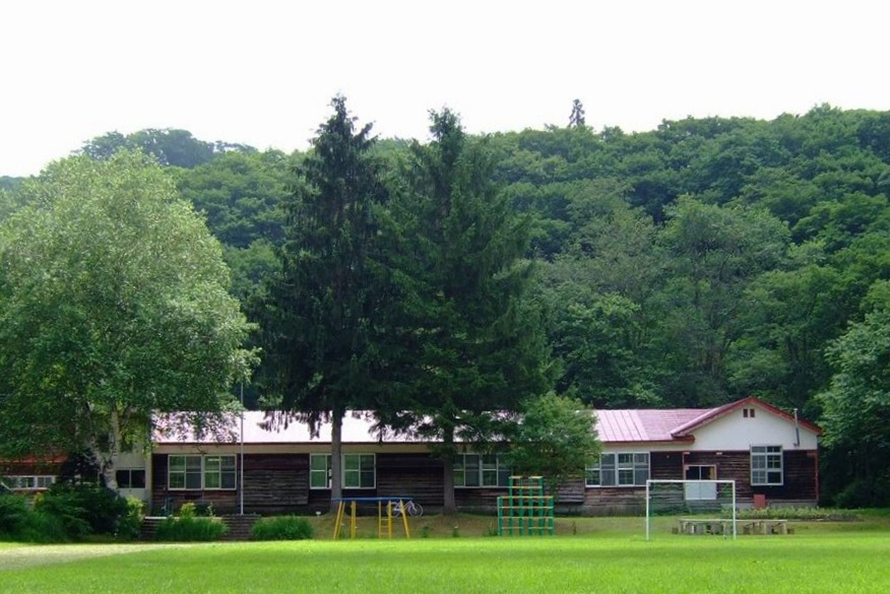
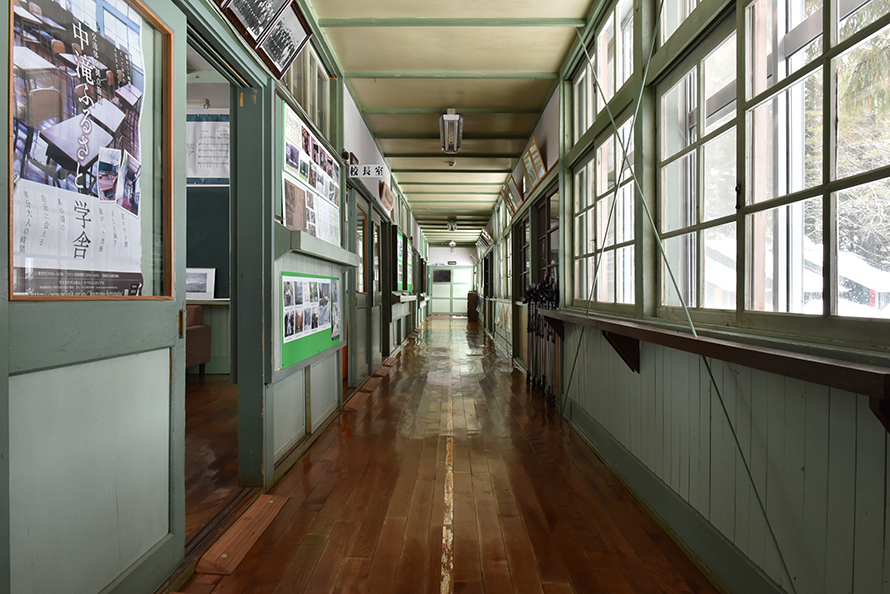
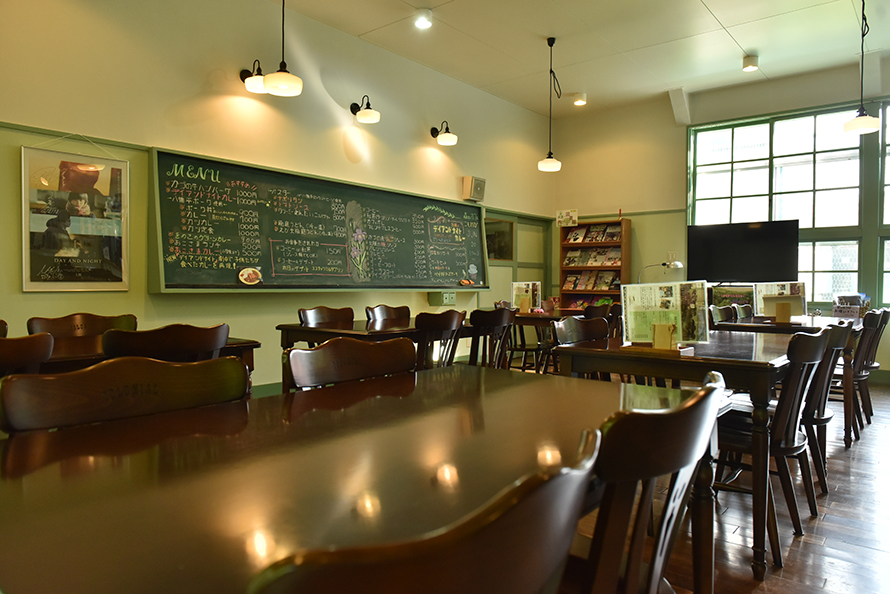
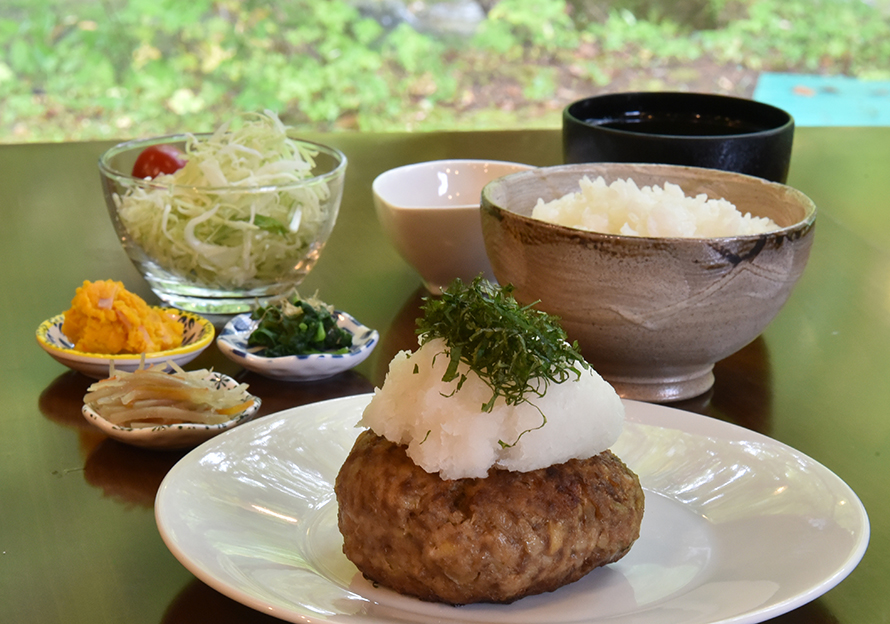
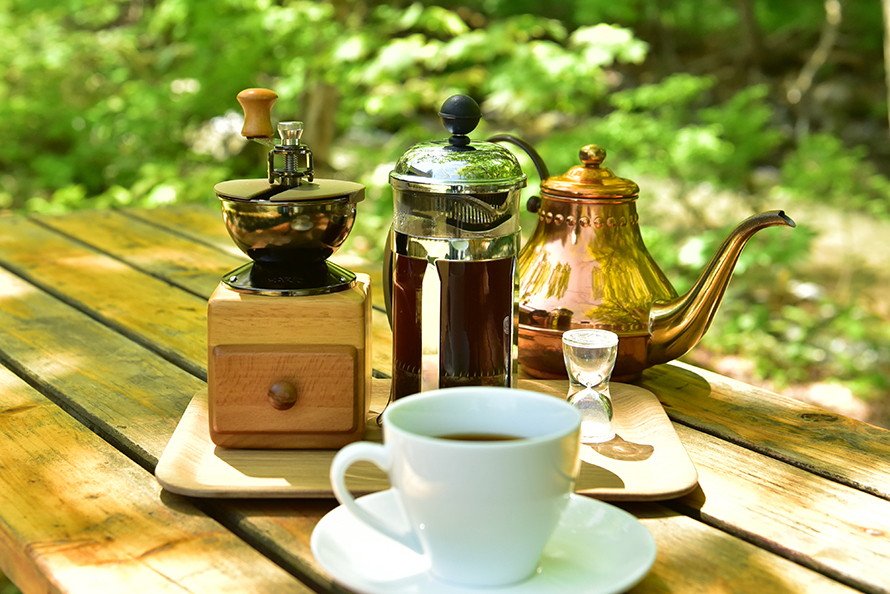
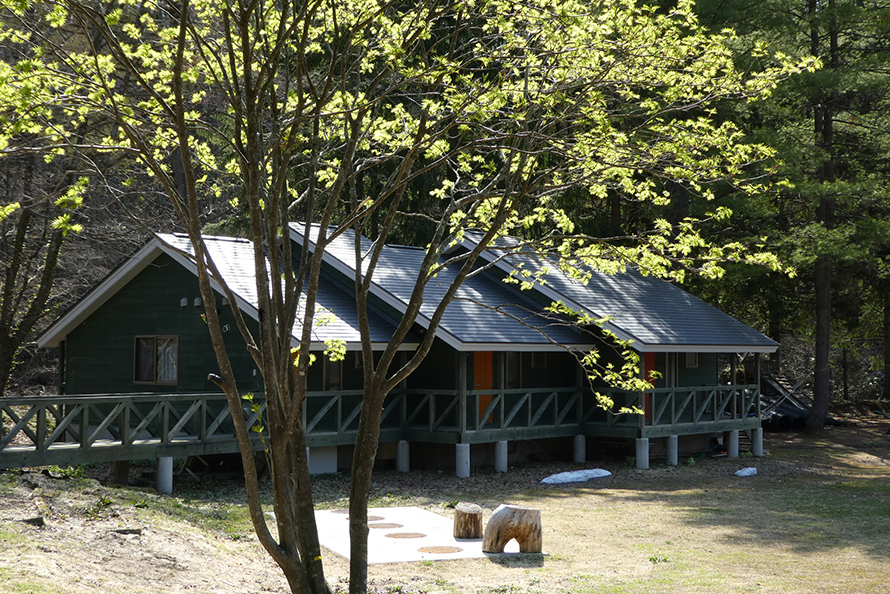






Kazuno City, which is located at the northeast end of Akita Prefecture, has faced the severe challenge of declining birthrates in recent years. In 2008, Nakataki Elementary School in the area officially announced its closure. However, with the cooperation of local people and local government, the wooden school building has been successfully maintained intact and revitalized to create a space with new features, which are able to attract tourists.
After two years of hard work, it has become a new local tourism exchange base called Nakataki Furusato Gakusha. With the schooling nature being kept, some small interesting courses are planned, including a natural environmental observation trip and cooking experience of local cuisine. A part of the school buildings has also been cleverly turned by local residents into a coffee shop named Mori-no-Cafe Komorebi, where visitors can enjoy coffee and foods made of local ingredients, such as the Kazuno Beef Burger and Hachimantai Pork Curry.
If you wish to stay longer, within the campus are three wooden log cabins that are available as accommodation for tourists; you can stroll in the outdoor camping area and immerse yourself in the forest wilderness, thinking of your good old days in the company of old school buildings.
See the inormation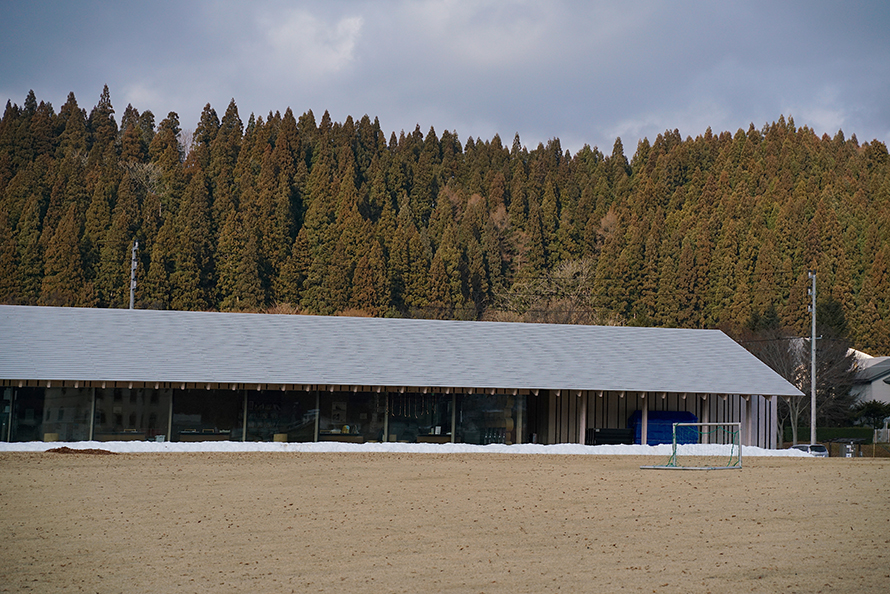
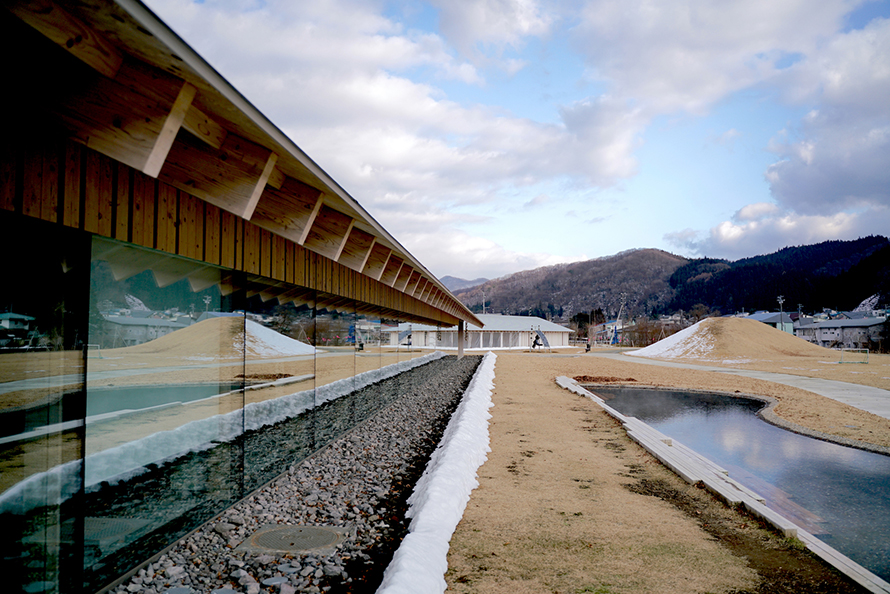
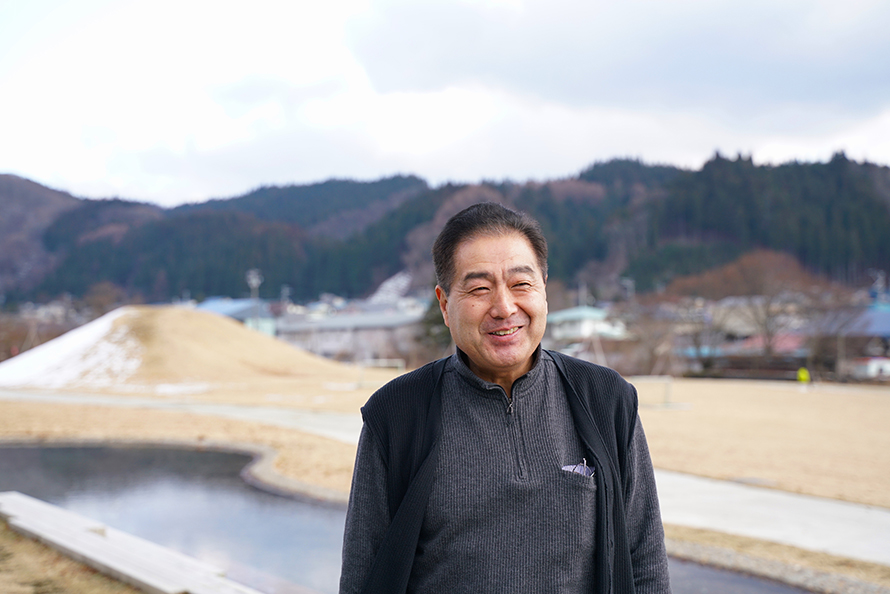
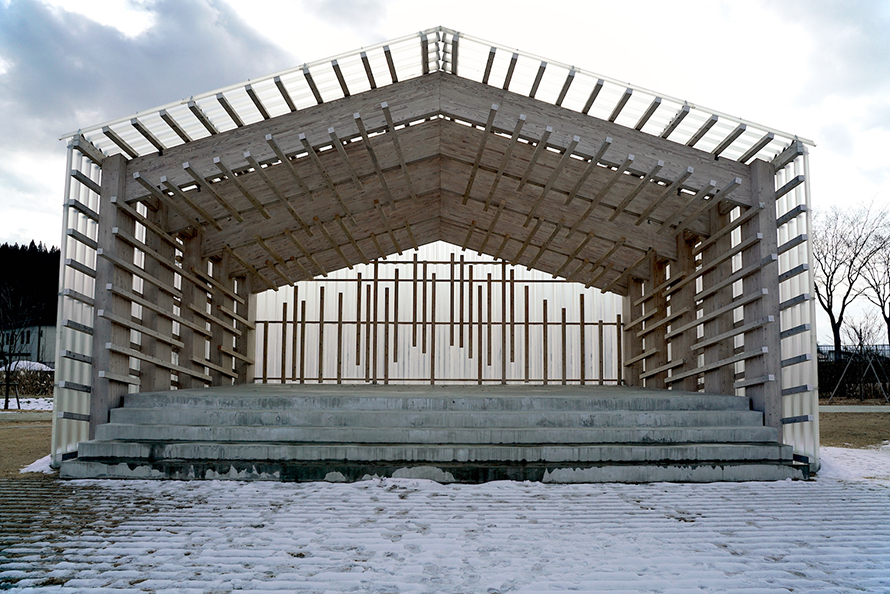
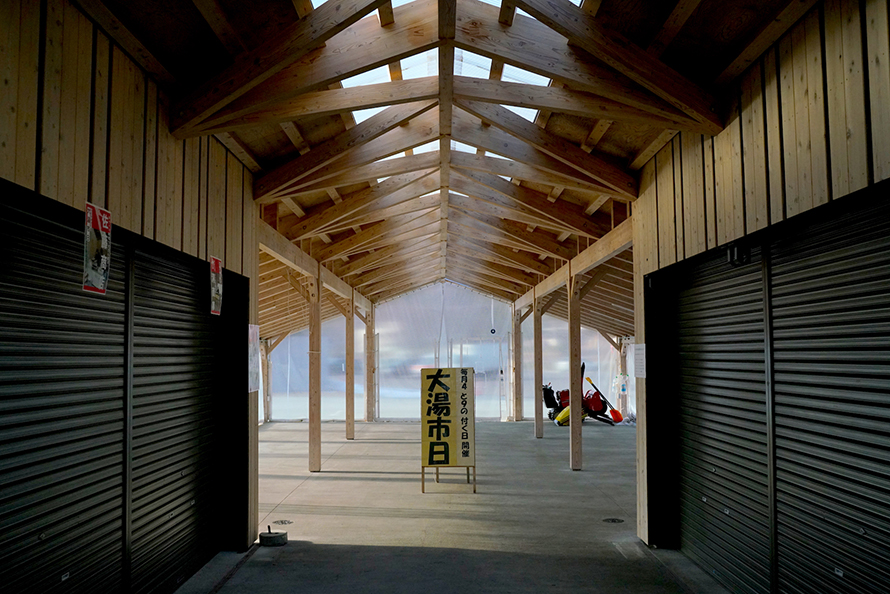
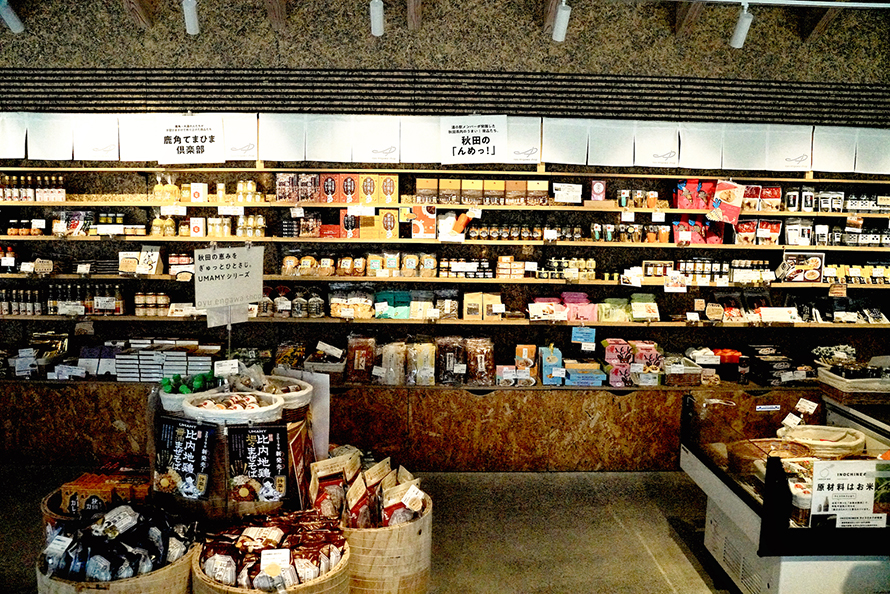
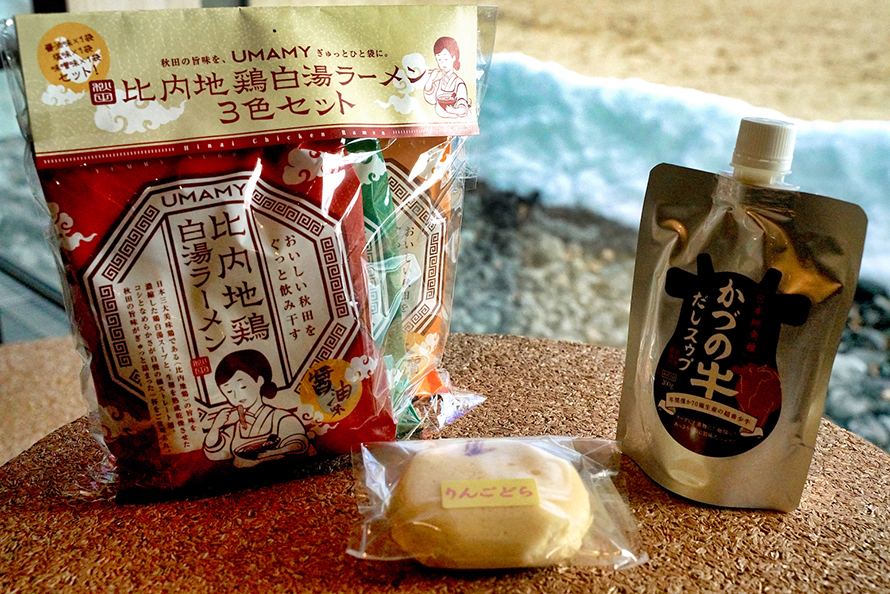
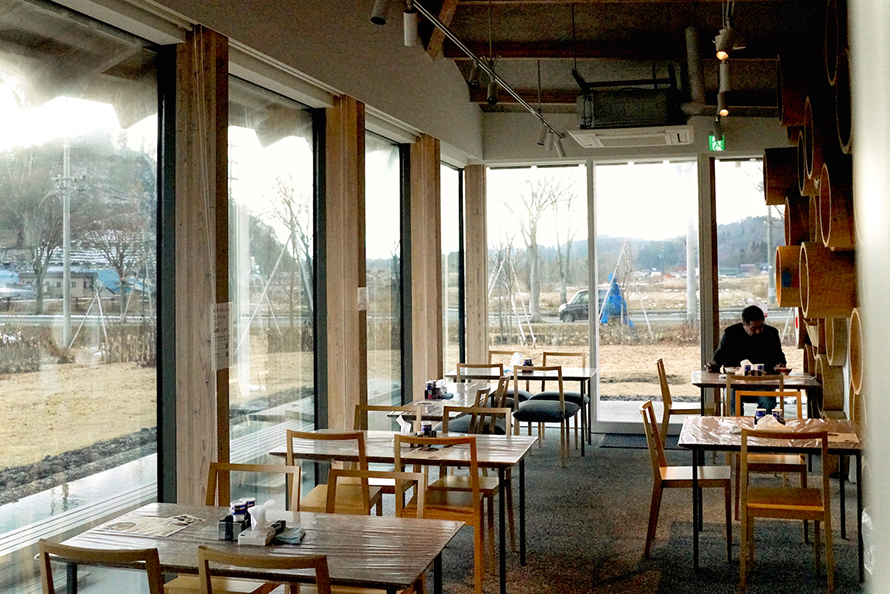








The Oyu River, which originates from Mt. Towari flows southwest to the Sea of Japan and passes through Kazuno City, where Oyu onsen (hot springs) flow out. With its onsen excavated more than 800 years ago, Oyu has been well known as an onsen town in Japan since ancient times. It was a healing place for southern lords during the Edo period (1603-1867), and it becomes a resort for many tourists to vacation and relax.
The Oyu onsen town has had a new landmark, rest station Michi-no-Eki Oyu since 2018. Designed by Kengo Kuma, a globally-known Japanese architect, the building’s appearance is rich in Zen but with a simple modern style. With Akita cedar as its main building materials, the landmark cleverly echoes the mountains and forests that the building espouses and becomes a low-key part of the landscape. A foot bath spa is set outside.
The coffee shop “Oyu Engawa Cafe” located in front of the souvenir shop is also a big selling point of this rest station. You can eat delicious dishes prepared with Kazuno Beef, something that you can’t find anywhere else and has attracted many gourmets to check it out. If you have the opportunity to visit Kazuno, don’t forget to stop here to experience the tranquility and beauty of Akita.
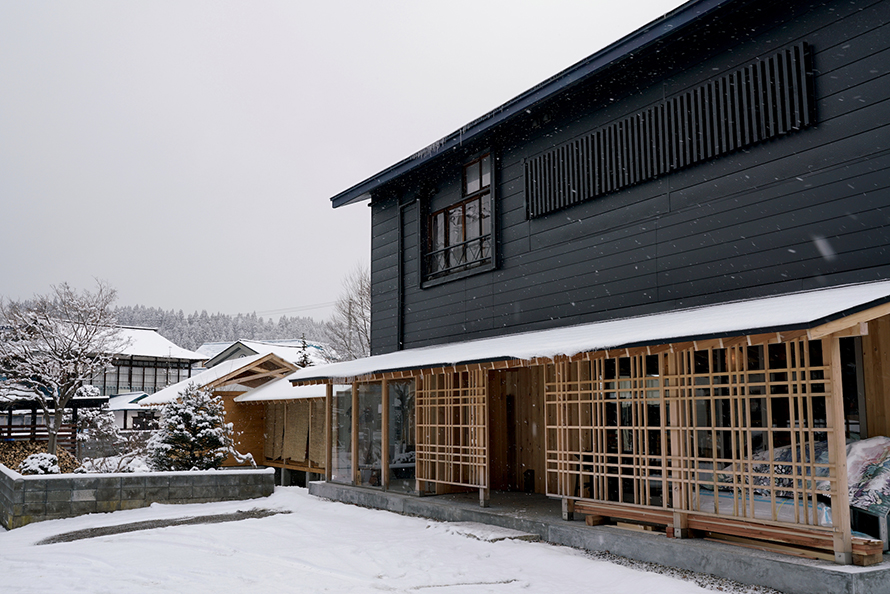
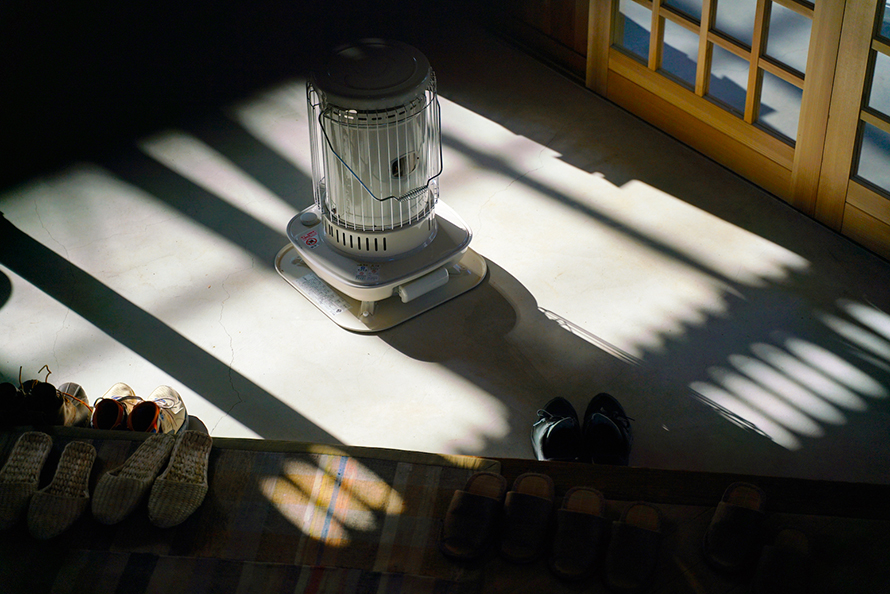
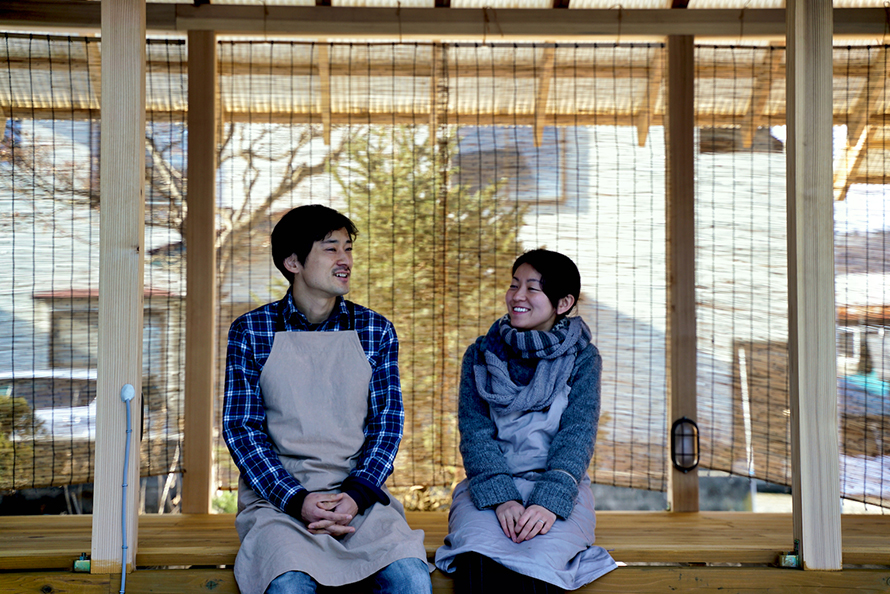
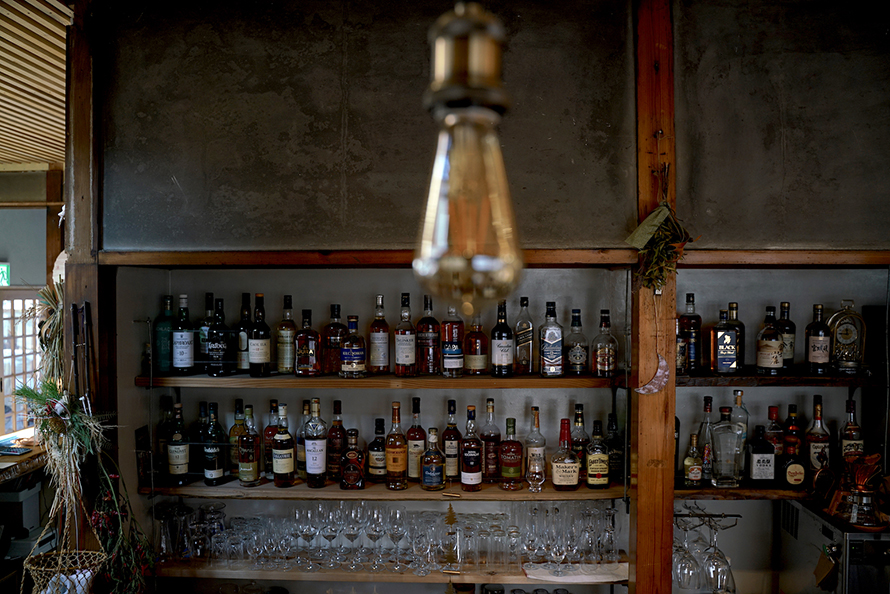
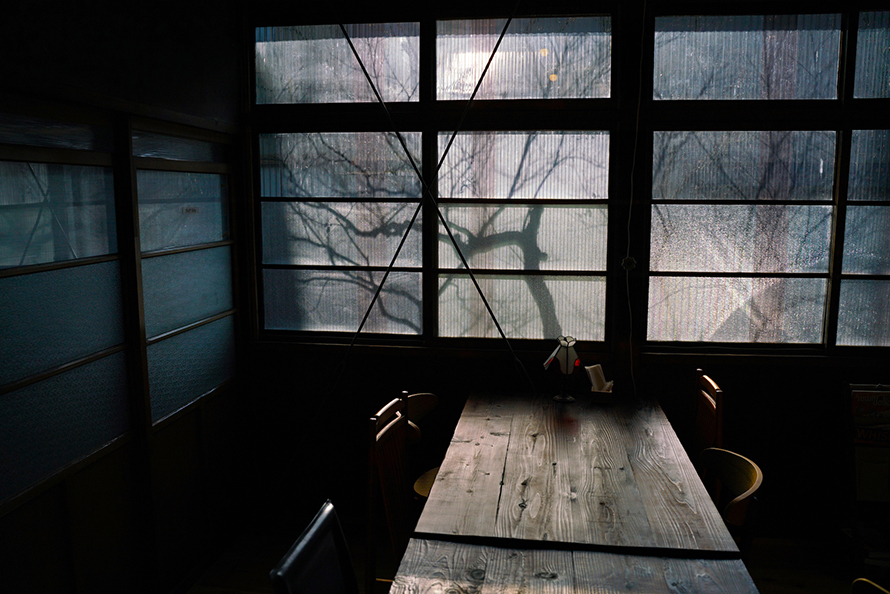
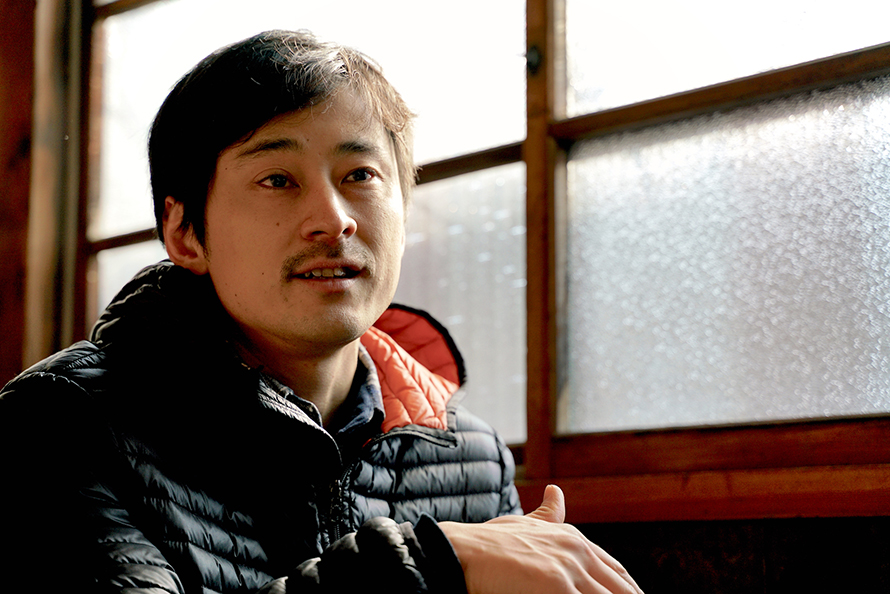
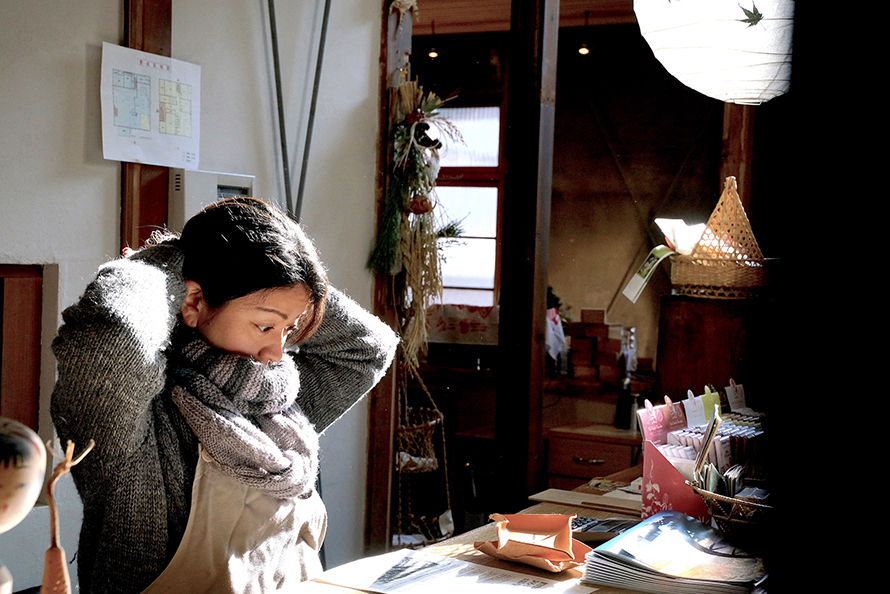
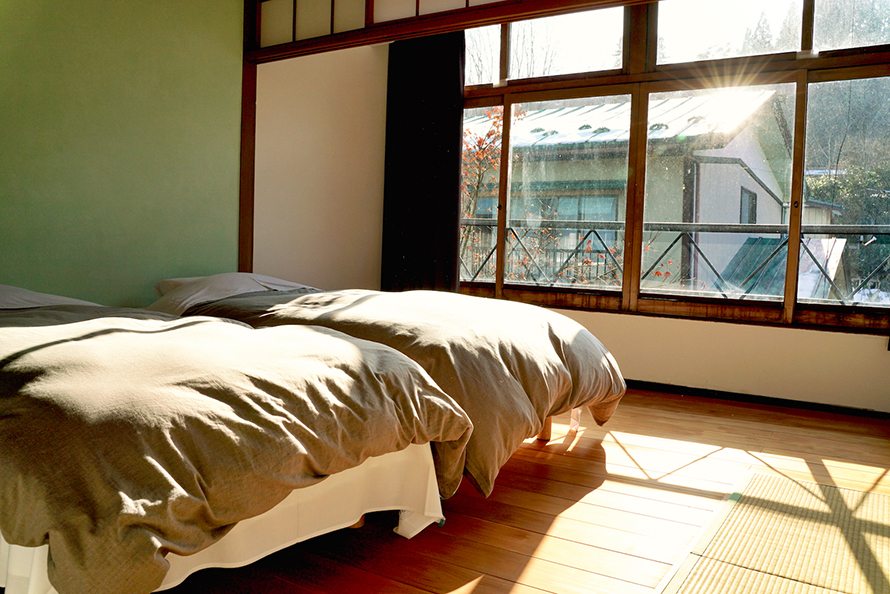
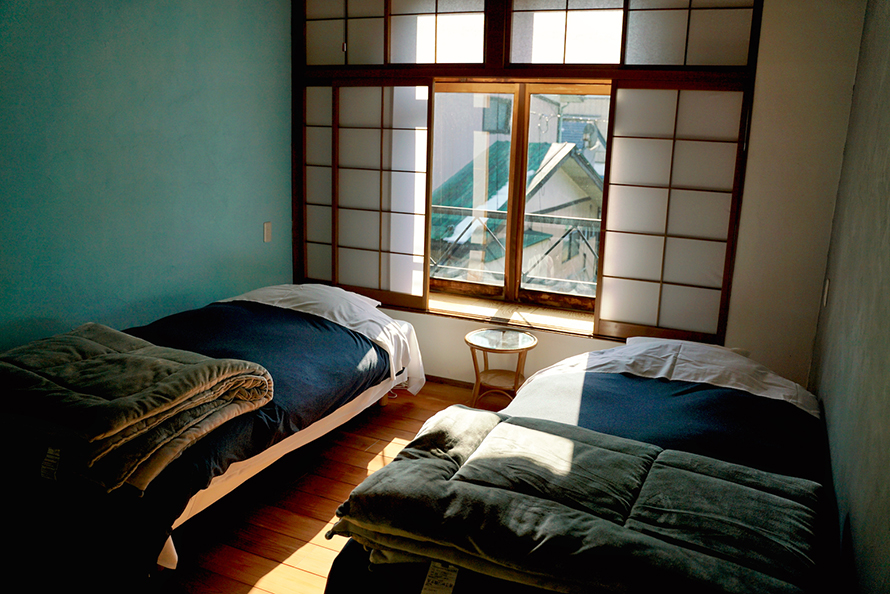









Bar & Stay Yuzaka, which opened in August 2019, is a low-key and simple wooden low-rise building, hidden in a quiet alley in Oyu, offering a unique quiet charm of the northern snow country.
Yoshiaki Suwa, owner of the Bar & Stay Yuzaka, loves wine. After relocating to Akita from other places, he started to renovate the old house into a compound hotel with restaurants, taverns and natural onsen facilities. “In the past, many people visiting Lake Towada, a famous tourist spot, would come to Oyu and stayed here. However, with the opening of the Aomori Shinkansen, fewer and fewer visitors would have chosen the original mode of transportation.” Yoshiaki Suwa said that the reason why he has opened this hotel is not only to provide visitors with the opportunity to know Oyu, but also hope to re-build the emotional connection between local people.
Whether it’s an extra layer of warm duvet in the bed, a rich breakfast using local food ingredients, a warm and healing onsen, they pay attention to every detail. Bar & Stay Yuzaka is more than just a place to stay but a kind of home, allowing visitors to feel the warm hospitality from the North.
See the inormation